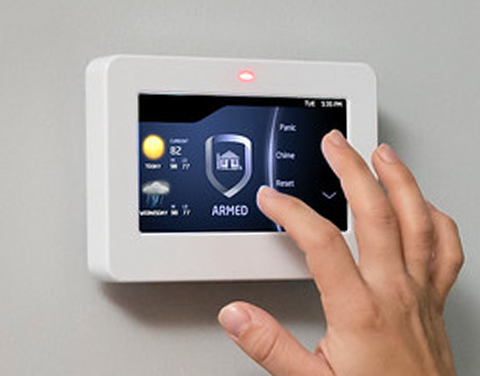Did you know that nearly 43% of cyberattacks target small and medium-sized businesses, and over 60% shut down within six months after a major security breach? As cyber threats become more sophisticated, relying on outdated or basic cybersecurity measures isn’t enough. Many companies think they are protected, but their defenses may be full of gaps. A simple firewall or antivirus software can no longer protect sensitive data and digital assets. Regular updates and proactive strategies are essential.
If your company’s cybersecurity services aren’t keeping up with the latest threats, it’s time to reassess your security setup. Spotting the warning signs early can help you strengthen your defenses before it’s too late.
Here are eight clear indicators that it’s time to consider an upgrade.
1. Frequent Security Alerts and False Positives
If your team is getting bombarded with frequent security alerts, many of which turn out to be false positives, it’s a sign that your current system is not optimized. An effective cybersecurity solution should be able to differentiate between genuine threats and harmless activity. Constant false alarms waste time, reduce productivity, and increase the chances of a real threat being overlooked. Upgrading to a more sophisticated system can streamline alerts, making it easier for your IT team to focus on real issues.
What to Look For: Newer systems with AI-driven threat detection that can reduce false positives and provide accurate insights.
2. Outdated Security Software
Using outdated software is one of the biggest risks a business can face. If your firewall, antivirus, or intrusion detection systems haven’t been updated, they may not be equipped to handle newer threats. Cybercriminals constantly develop new tactics to bypass older security measures, making it essential to have up-to-date solutions that can respond to the latest attack methods.
Upgrade Tip: Look for security software that offers automatic updates and real-time threat intelligence to stay ahead of evolving cyber threats.
3. Increase in Phishing Attacks
Have you noticed a rise in phishing attempts targeting your employees? This could indicate that your cybersecurity measures are failing to block these malicious emails. Phishing is one of the most common cyber threats, and it can have serious consequences if even one employee falls for it. A robust email security system with advanced filtering can help reduce the number of phishing emails that reach your employees’ inboxes.
Consider This: Upgrading to a system that uses machine learning to detect and quarantine phishing attempts before they reach your staff.
4. Slow Incident Response Times
If your team struggles to respond quickly to security incidents, it indicates that your current system isn’t adequate. Slow response times can lead to data loss, reputational damage, and financial penalties. Modern cybersecurity solutions often have automation features that help speed up the incident response process by automatically isolating threats and notifying the right personnel.
Why It Matters: Faster response times minimize damage and recovery costs, making your business more resilient against cyber threats.
5. Compliance Issues and Regulatory Risks
Many industries, such as finance and healthcare, have strict data protection and privacy regulations. If your cybersecurity services aren’t helping you meet these standards, it’s time to upgrade. Compliance failures can result in hefty fines, legal issues, and loss of client trust. Newer cybersecurity solutions often come with built-in compliance tools that make it easier to adhere to industry regulations and provide audit-ready reports.
Solution to Consider: Opt for cybersecurity services that offer compliance management features to simplify regulatory requirements.
6. Lack of Visibility Across the Network
Can you see what’s happening across your entire network? If not, you’re at risk of missing potential threats. A lack of visibility means you won’t be able to detect unusual activity until it’s too late. Upgrading to a solution with complete network monitoring will help you spot and respond to suspicious behavior in real time.
Upgrade Recommendation: Choose a solution that provides centralized visibility with dashboards that allow you to monitor every device and user on your network.
7. Increased Use of Remote Work
The rise of remote work has changed the security landscape for many businesses. If your current cybersecurity services aren’t equipped to handle remote access securely, it’s time to reconsider your setup. Employees accessing company data from different locations can increase the risk of data breaches if the right security measures aren’t in place.
Address This By: Implementing a system with secure VPNs, multi-factor authentication, and remote access management to protect against potential vulnerabilities.
8. Outdated or Nonexistent Employee Training
A well-informed workforce is a critical line of defense against cyber threats. Even the best cybersecurity systems might not be enough if your team hasn’t received up-to-date training on identifying and avoiding common cyber risks. Regular training helps employees recognize phishing attempts, avoid suspicious links, and handle sensitive data responsibly.
What to Implement: Partner with a provider that offers ongoing training and security awareness programs to keep your staff informed and vigilant.
The Cost of Neglecting Your Cybersecurity: Why Staying Updated Matters
With cyberattacks costing businesses an average of $4.24 million per incident globally, using outdated security measures is a risk you can’t afford to take. Older systems cannot handle modern threats, leaving your network vulnerable. Over 80% of companies that experience cyberattacks report significant financial losses, and many never fully recover. Staying ahead of threats means using the latest technologies and practices to protect your data, systems, and reputation.
Why an Upgrade Matters
What worked a few years ago might not be effective today. Upgrading your cybersecurity services ensures your business has the latest tools and strategies to defend against potential risks. From improved threat detection and faster response times to better compliance management, an upgraded system can safeguard your business in today’s increasingly complex digital environment.
If any of the signs mentioned above resonate with your business, it’s time to consider contacting a professional IT support company. They can assess your current setup, recommend the necessary upgrades, and implement a customized solution that fits your needs and industry requirements.











